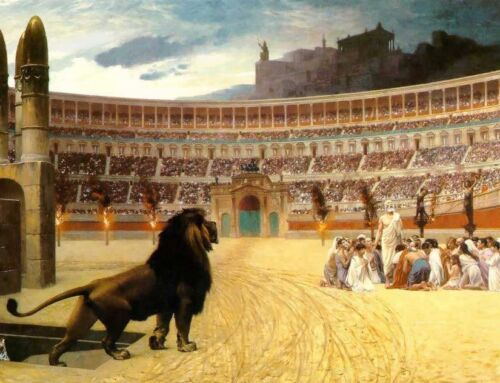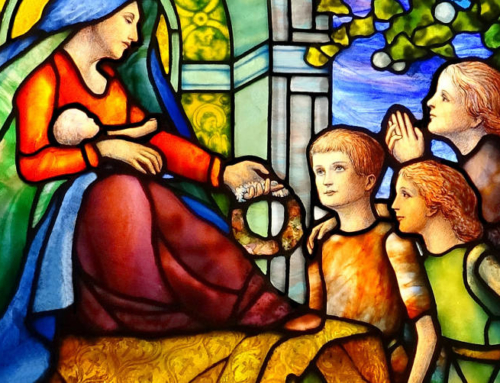If you page through a traditional Catholic hymnbook you will eventually come across the name of Frederick William Faber (1814-1863) in the composer credits at the bottom of a given hymn. That would be Father Frederick Faber, English Catholic priest, convert to Catholicism, and composer of hymns extraordinaires.
Fr. Faber made some of the most remarkable contributions to Catholic music in the English-speaking world. He wrote 150 beautiful hymns, a number of which even survived the post-Vatican II liturgical slaughterhouse and are sung by Catholic congregations to this day.
Father had been an Anglican priest before he converted to Catholicism and continued serving souls in the Catholic priesthood. Faithful churchgoers would know Fr. Faber’s most famous hymn – Faith of Our Fathers – but that hymn is just one of the many Faber hymns that celebrate the virtues of the Catholic Church and its rich Tradition of faith, hope, and charity.
An unlikely witness
The ever-witty Fr. George Rutler, was a great admirer of Fr. Faber but didn’t pretend that Faber’s works were all of equal merit:
[Faber’s] pious writings, such as All for Jesus and Growth in Holiness, were an admixture of brilliant simplicity, enchanting style, and occasionally pious slush; and the typography of his spiritual verse at higher peaks and deeper valleys perhaps than that of anyone of the period, save a few, including William Wordsworth….Faber’s voluminous output is more remarkable for his constant struggle with ill health.
We should expect some inconsistencies in one, who by his own admission, had no musical background when he started his hymn writing. That makes his contributions all the more extraordinary.
Fr. Faber came out of the hymn-singing traditions of English Protestants and thought that Catholics should have their own engaging hymns for worship. He disliked the clumsy translations of Catholic hymns from other cultures and believed that English Catholics would wholeheartedly embrace hymns that reflected their own religious sentiments and culture.
He was right. His first widely-published collection of hymns, Catholic Hymns for Singing and Reading (1849), was an instant success and the beginning of a life-long effort by the cleric to fill the souls of the faithful with Beauty, Truth and Goodness
Catholic devotionalism
The twin virtues of doctrinal truth and tender sentiment flow from Fr. Faber’s amazing repertoire of hymns. The titles alone are a treat, as they point to a sincere devotional Catholicism rich in imagery, theology, and feeling.
Here are a few delightful titles (and their subjects in parentheses) which will give you a feel for English Catholic spirituality of the 19th century. The rest of the titles you can access at the Hymnary website if you so wish. I have reproduced these titles as they appear on that site:
O what is this splendour that beams on me now? (Heaven)
Christians, to the war! Gather from afar. (Church Militant)
Sing, sing, ye angel bands. (Assumption of Mary)
How the light of Heaven is stealing. (Grace)
My God! Who art nothing but mercy and kindness. (Repentance)
At last Thou art come, little Saviour. (Christmas)
These wonderful titles and others are only outdone by my personal favorite:
Why is thy face so lit with smiles? (Ascension)
His most glorious work
But Fr. Faber’s crowning glory, to my estimation, is Jesus, my Lord, my God, my All, the hymn we feature in the video link below.
It is a hymn to the Most Holy Eucharist – or, to be more precise, it is the song of a soul longing for its Eucharistic Lord. It has a very personal feel and represents a ravishing expression of love from a devoted heart. Perhaps it is a musical account of Fr. Faber’s own priestly Eucharistic spirituality. I could listen to this hymn all day!
Alas, the wonderful Christendom College choir performs only two verses of this lovely hymn, which originally had nine verses. I was unable to find more than four verses on the Internet, but I would invite anyone who can supply all nine verses to post them in the comment section below – it would be a real treat to have them all.
Of course, there is nothing stopping you from listening to this sublime composition over and over (as I do!)
The performance (duration, 2:16)
What to look for
Here are a few things to attend to in the Christendom performance of Fr. Faber’s masterpiece:
- This is a three-part hymn in which the women’s voices sing the melody in unison while the men’s voices perform separate harmony parts for bass and tenor.
- The hymn is performed a cappella (without musical accompaniment) although Fr. Faber naturally meant it to be sung congregationally accompanied by the pipe organ.
- The diction of the Christendom choristers is flawless: every word is perfectly pronounced and every consonant and vowel articulated with precision (note the crisp t’s and s’s, in the words “gift” and “bursts” especially).
- Pay attention to the way in which the three voice registers blend perfectly: the basses create a bedrock foundation for the song, while the female voices add color, feeling, and soaring beauty. The middle tenor voices give a richness and depth to the whole piece.
- Note the ascending and descending lines of the male voices These rising and falling harmonies provide a sense of movement and dynamism to enrich the gorgeous women’s voices above them singing straight lyrics.
- The high point of each verse is the upsurge of voices leading to the word “Adore.” Note the lovely and delicate pause of the musicians on that word as if in a moment of sublime adoration.
- The second verse unites us with the Eucharistic spirituality of the Blessed Virgin Mary herself as she adores her Divine Son.
- At the conclusion of each verse we find the key to the composer’s motivation: the priest wants us to love God more deeply through the Blessed Sacrament. The echoing refrain should deepen the sentiment of the singer as the hymn progresses: “O make us love thee more and more”! Asking God to “make us” love Him is also theologically accurate because even our ability to love God must itself be given as a gift of grace.
Lyrics
Jesus, my Lord, my God, my All,
How can I love thee as I ought?
And how revere this wondrous gift,
So far surpassing hope or thought?
Sweet Sacrament, we thee adore;
Oh, make us love thee more and more.
Oh, make us love thee more and more.
Had I but Mary’s sinless heart
To love thee with, my dearest King,
Oh, with what bursts of fervent praise
Thy goodness, Jesus, would I sing.
Sweet Sacrament, we thee adore;
Oh, make us love thee more and more.
Oh, make us love thee more and more.

Soul Work
Fr. Faber’s Eucharistic hymn is a well-constructed piece of poetry that rhymes and has a simple but sublimely beautiful tune. Through repetition, you can easily memorize it and interiorize it to enrich your own devotional life.
Devotion to God and fervency of faith are not the same as sentimentality, which is a common fault of many believers. True devotion calls upon the very depths of our being and unites the mind (theological truth), the emotions (religious feelings), and the will (the choice of the good according to God’s will).
Do a sentimentality check on your devotional life today to see whether your devotions contain all three elements: truth, fervent emotions, and a firm decision to do His Will, however He may reveal it.
If time permits this week, make a visit to your local Catholic church or a Eucharistic adoration chapel to express your love for Jesus whose Presence we embrace most fully in the Holy Eucharist.
When in adoration, ask Him: “How can I love thee as I ought?” Surrender to Him your mind, your emotions, your will. It is the sweetest surrender of all.
————-
Source: Fr. George William Rutler, The Stories of Hymns: The History Behind 100 of Christianity‘s Greatest Hymns (Irondale, Alabama: EWTN, 2016), 259.




Leave A Comment